 |
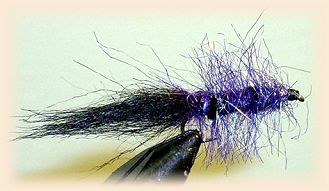 Wal-Mart Woolly-Bugger |
|
|
Materials for the Wal-Mart Woolly Bugger:
Method for the Wal-Mart Woolly-Bugger: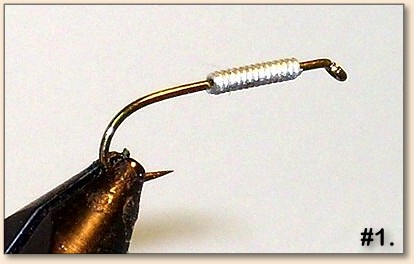 Step 1. Start by winding the first 1/3rd of the hook shank with the round wire.
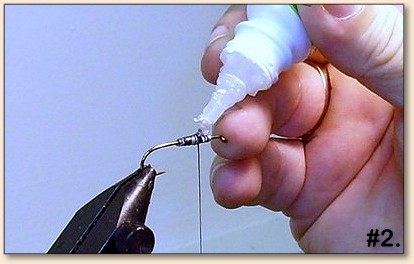 Step 2. Wind thread through the wire wraps and coat with Zap-A-Gap to anchor the wire and thread.
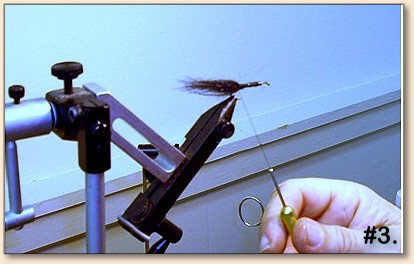 Step 3. Wind thread to the hook bend and tie in a clump of black craft fur for the tail. It should be about 1-1/2 times the length of the hook shank.
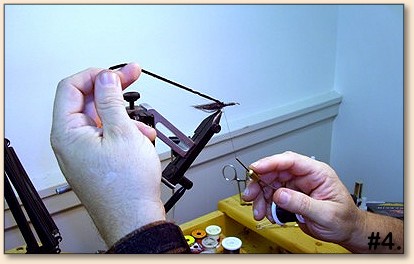 Step 4. Tie in a length of black chenille.
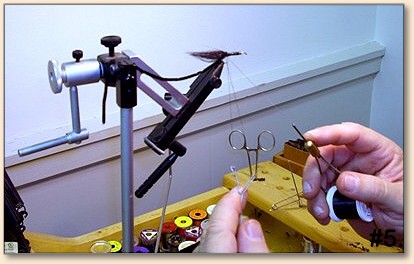 Step 5. Make a dubbing loop, around 6" long. Now, wind the running length of thread to the front of the hook, leaving enough room in front to form a head without crowding the hook-eye.
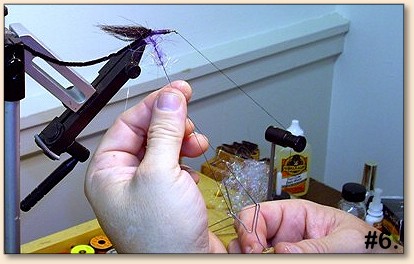 Step 6. Begin twisting the loop as you feed-in sparse clumps of purple craft fur, with intermittent very sparse amounts of pearl flashabou.
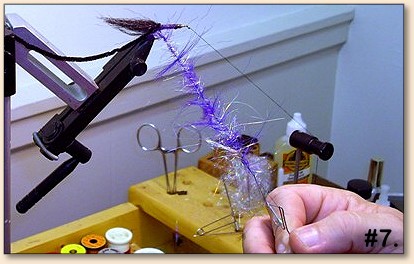 Step 7. Continue until you have around a 6" length of dubbed line. 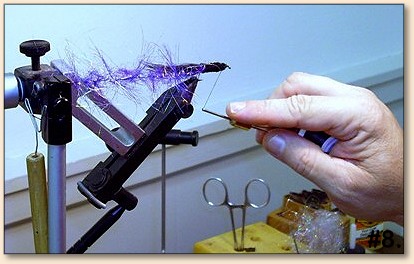 Step 8. Now, move the hackle out of the way, and wind the chenille to the front, and secure it with a few wraps of running thread.
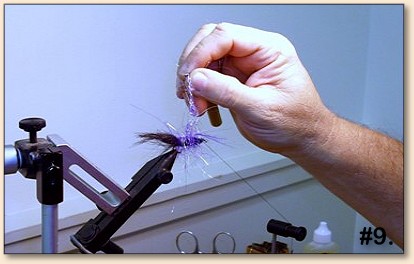 Step 9. Wind the hackle forward, to the front, making evenly spaced wraps.
 Step 10. Tie off the hackle, cut off the excess, form a nice head with the thread, and whip-finish. Cut off the running line.
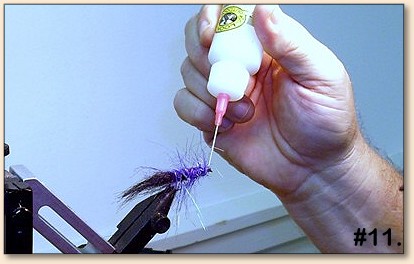 Step 11. Coat the head with head cement, soaking the thread well, and being careful to keep the hook-eye open, and free from fur and cement.
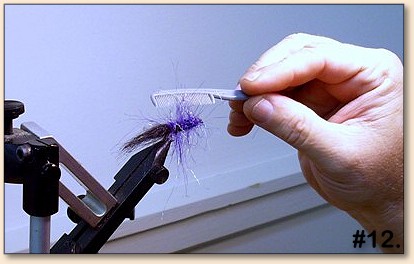 Step 12. Using a mustache comb, or other similar tool, gently tease out the hackle so that it stands out and look really "buggy."
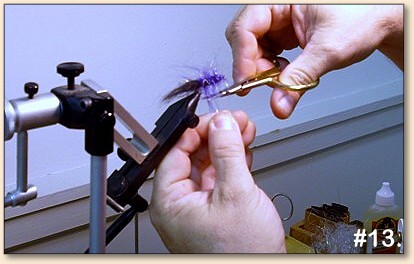 Step 13. Trim the hackle length evenly, to slightly more than the hook gap width, all the way around.
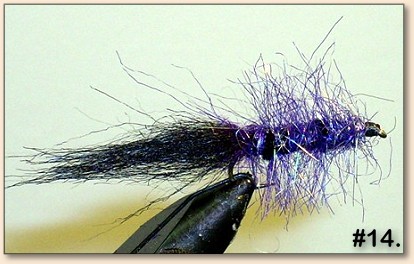 Step 14. The finished fly.
About Joel: I'm a professional musician, minister, writer, and Doctor of
Naturopathy. I'm also a former US Marine, and USN diver.
I've been a fly fisherman since 1968. I've always been an
avid outdoorsman, and I have fished in some great waters
all around the world. In 1970, I started tying flies, and I've
been 'hooked' ever since. Originally from Lewisville, Tx., I
now live in the Cohutta Wilderness of S.E. Tn., and N. Ga.
Pristine trout streams are within walking distance of my house,
and I am in easy distance of the Hiawassee, Ocoee, Conasauga
and Jacks Rivers…some of the most beautiful, unspoiled
places left. There also several large lakes nearby, so I stay busy
fishing for all kinds of fish species. I fly fish for trout, warm-water
and salt-water fish. I love to share my experiences of over four
decades of living life to the fullest. I have a blog page on Yahoo
360, so stop in and see what's new. ~ Joel C. Brothers
I'm a professional musician, minister, writer, and Doctor of
Naturopathy. I'm also a former US Marine, and USN diver.
I've been a fly fisherman since 1968. I've always been an
avid outdoorsman, and I have fished in some great waters
all around the world. In 1970, I started tying flies, and I've
been 'hooked' ever since. Originally from Lewisville, Tx., I
now live in the Cohutta Wilderness of S.E. Tn., and N. Ga.
Pristine trout streams are within walking distance of my house,
and I am in easy distance of the Hiawassee, Ocoee, Conasauga
and Jacks Rivers…some of the most beautiful, unspoiled
places left. There also several large lakes nearby, so I stay busy
fishing for all kinds of fish species. I fly fish for trout, warm-water
and salt-water fish. I love to share my experiences of over four
decades of living life to the fullest. I have a blog page on Yahoo
360, so stop in and see what's new. ~ Joel C. Brothers For more great flies, check out: Beginning Fly Tying, Intermediate Fly Tying and Advanced Fly Tying.
|